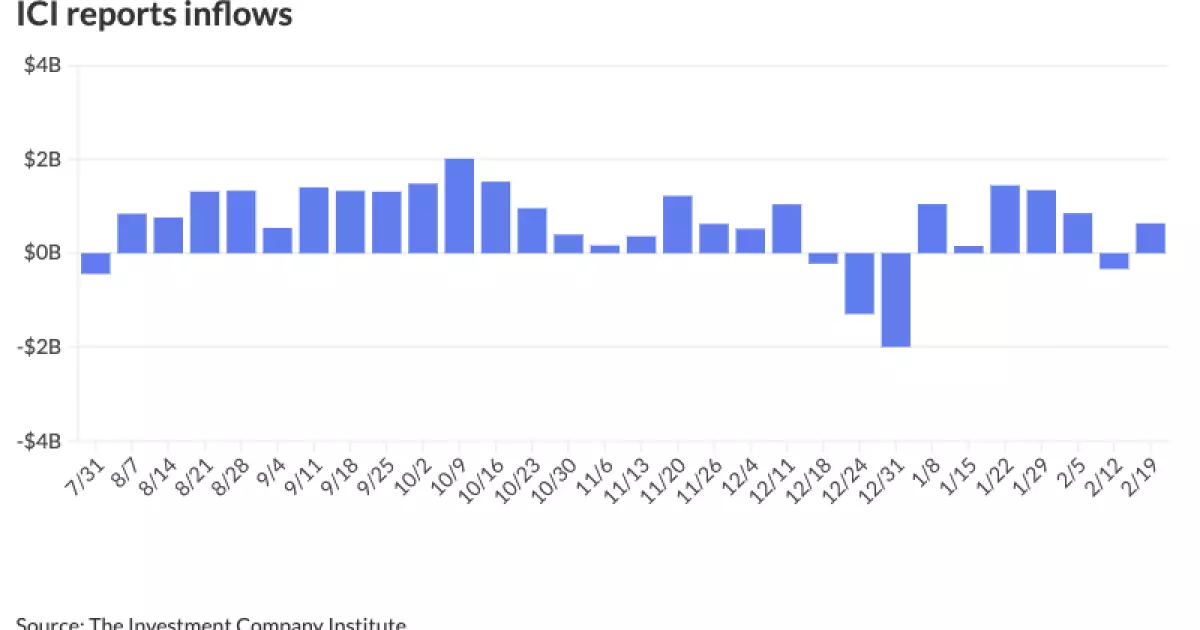In the financial landscape, recent activity within the municipal bond market has revealed nuanced dynamics influenced by external economic factors, particularly U.S. Treasury yields and the stock market’s behavior. On one hand, municipal bond prices reflected a slight firmness amid a backdrop of falling Treasury yields, signifying a cautious optimism among investors. The ratios of municipal bonds compared to U.S. Treasury securities have also shown variability, with figures such as 63% for the two-year and 87% for the 30-year bonds indicating a complex interplay between supply and demand.
Local issuers are increasingly turning to the municipal market to secure financing for essential infrastructure projects. Indeed, they are motivated by a growing urgency to address long-deferred projects exacerbated by rising construction costs—an issue amplified by inflationary pressures in the current economic climate. The recent influx of $635 million into municipal bonds, following a week of significant outflows, exemplifies this trend and hints at a stabilized interest from investors despite previous volatility.
Inflationary Pressures and Infrastructure Funding
Jeff Devine, a municipal research analyst, identifies a critical factor contributing to the robust issuance of municipal bonds: the combination of inflation and the potential phase-out of the tax exemption on municipal financing. With construction costs soaring, many municipalities are eager to preemptively secure necessary funding before any adverse tax policies could take effect. The urgency is evident, as municipalities may lose the advantages that the tax-exempt status provides, which could subsequently raise borrowing costs and force government entities to seek revenue through higher taxes elsewhere.
The ongoing discussions around this potential tax policy change are pivotal. As noted by Jeff Timlin of Sage Advisory, the debate does not simply revolve around loss of revenue for the federal government but critically assesses the benefits to society. The ramifications of eliminating the tax exemption could extend beyond simple fiscal metrics, reshaping the funding landscape for essential services and infrastructure projects.
The municipal market is also witnessing significant transactions that could influence overall market sentiment. Notably, the $1 billion-plus deal by the South Carolina Public Service Authority stands out as a key driver of recent issuance activity. These mega deals not only provide municipalities with crucial funds for infrastructure improvements but also contribute positively to market liquidity and investor confidence.
The upcoming months are anticipated to present challenges, however. Timlin points out that while February’s issuance may reflect stability, the following months, specifically March and April, pose a risk of reduced supply as coupon and maturity structures become less favorable. This ebb and flow of issuance could have profound effects on municipal bond pricing and market accessibility in the near term.
As attention remains fixed on the backdrop of policy considerations regarding municipal bond tax exemptions, potential legislative frameworks could significantly alter the landscape. J.P. Morgan strategists indicate some momentum toward a collaborative approach among lawmakers that would facilitate tax exemptions without overly burdensome offsets. This ongoing negotiation underlines the critical nature of stakeholder alignment in preserving the viability of municipal financing avenues.
The proposals under consideration—such as modifications to higher education endowment tax rates—further illustrate how certain sectors may still find themselves at risk due to tax policy changes. Such nuances emphasize the importance of close monitoring of not only bond performance but also parallel tax reforms that may shape the future of municipal financing.
As of the latest reports, various issuances are setting the stage for future market developments. Significant upcoming offerings include $900 million in gas project revenue bonds from the Black Belt Energy Gas District and turnpike revenue bonds from the Pennsylvania Turnpike Commission totaling approximately $603 million. These transactions underline the ongoing commitment of municipalities to fund projects critical for their infrastructure and service delivery.
The municipal bond market’s recent behavior paints a complex picture wherein investors remain cautiously optimistic, but are simultaneously wary of potential shocks stemming from external economic pressures and evolving tax policies. Continued shifts in the landscape will require adaptability in investor strategies, as they navigate through the evolving dynamics of a market intricately linked to the fiscal health of local and state governments.
The intersection of inflation, tax policy discussions, and major infrastructure deals outlines a pivotal moment for the municipal bond market, evoking a need for both vigilance and strategic foresight among market participants.

